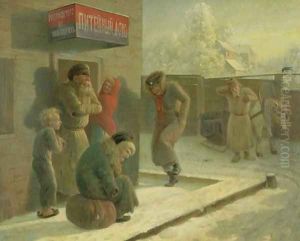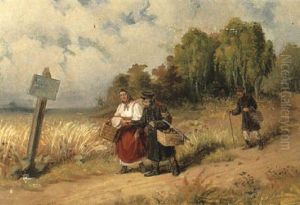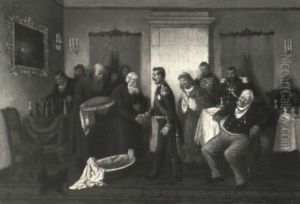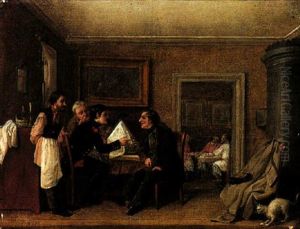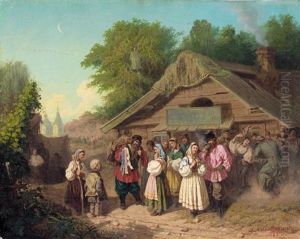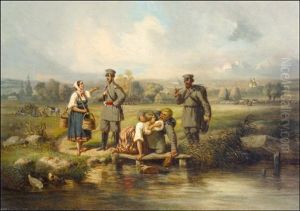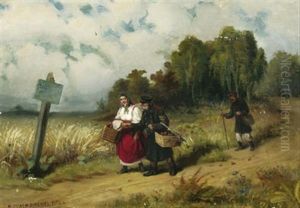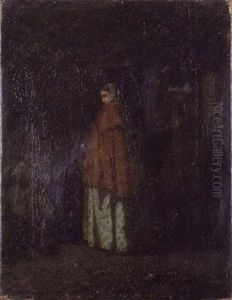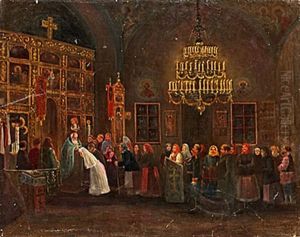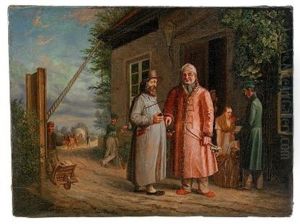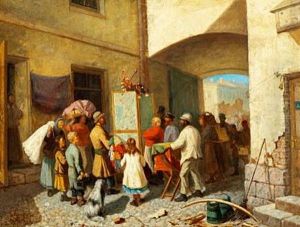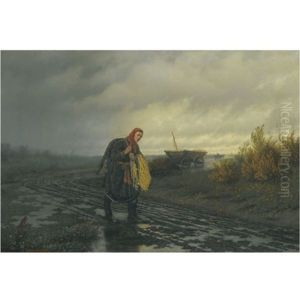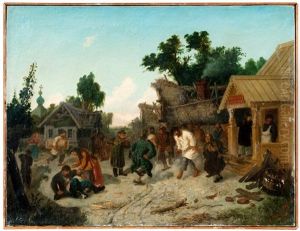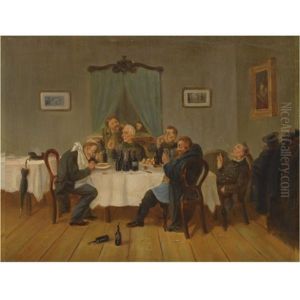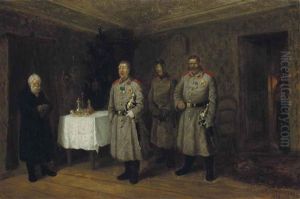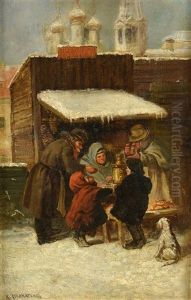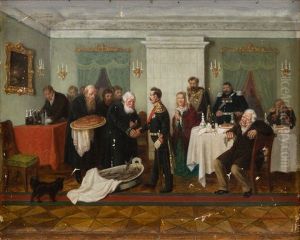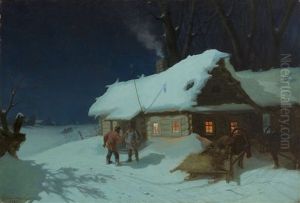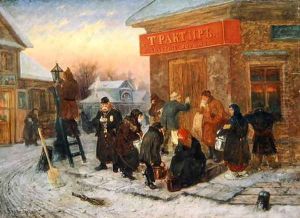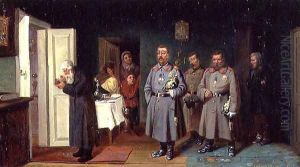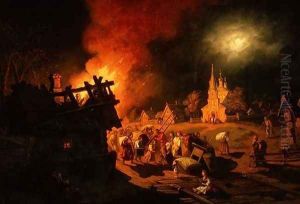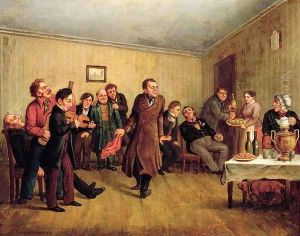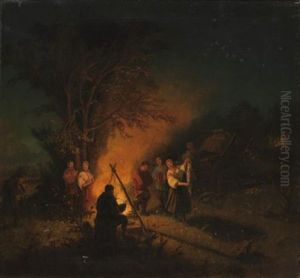Leonid Ivanovich Solomatkin Paintings
Leonid Ivanovich Solomatkin was a Russian painter born on May 24, 1837, in the city of Moscow. He was primarily known for his genre paintings, which depicted scenes of Russian life, often with a focus on the peasantry. His works are characterized by a fine attention to detail, a rich palette, and a certain warmth and humanity that captures the essence of 19th-century Russian society.
Solomatkin received his early artistic education at the Moscow School of Painting, Sculpture and Architecture, where he was a student of the revered painter Sergey Zaryanko. He continued his studies at the Imperial Academy of Arts in Saint Petersburg, where he honed his skills and became deeply influenced by the realist movement, which was gaining momentum in Russia during the mid-19th century.
Throughout his career, Solomatkin was an active participant in the Russian art scene. He became a member of the Peredvizhniki (The Wanderers or The Itinerants), a group of Russian realist artists who, in protest of academic restrictions, formed an artists' cooperative which evolved into a pivotal art movement. They organized traveling art exhibitions throughout the Russian Empire, aiming to make art accessible to the general public, including the peasantry, which was a novel idea at the time.
Solomatkin's work often illustrated the lives of the common folk, their traditions, festivities, and the stark realities of their everyday existence. Notable works include 'Christening in the Village' and 'The Village Wedding', both of which are exemplary of his style and subject matter. These paintings are celebrated for their narrative quality and the way in which they encapsulate the spirit of the period.
Despite being less well-known internationally than some of his contemporaries, Solomatkin made significant contributions to Russian art and culture. His works are preserved in various museums and private collections, primarily in Russia. Leonid Ivanovich Solomatkin's legacy endures through his heartfelt portrayals of Russian life, and he remains a respected figure in the annals of Russian art history.
He passed away on June 24, 1905, in Saint Petersburg. His death marked the end of an era for the genre painting tradition in Russia, but his influence continued to be felt by future generations of Russian artists.
